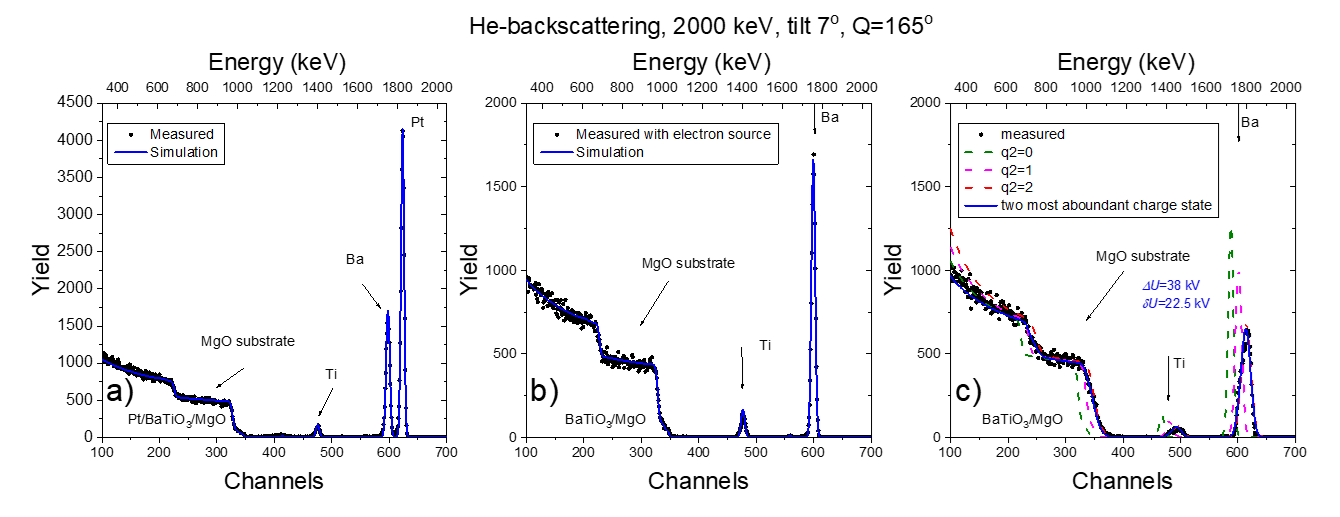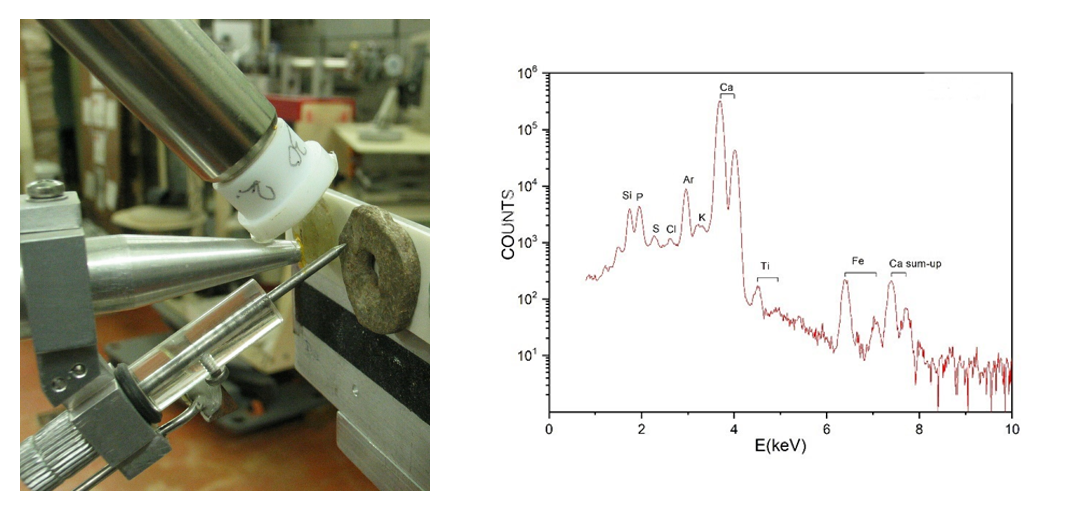2018
Charge accumulation — Insulator materials have scientific and technological importance in diverse areas such as thermo-isolating coatings for spacecraft, optoelectronics solar panels, and applications of polymers, etc. During the bombardment of insulator materials with energetic particles, i.e., during ion implantation or ion beam analysis, the samples are often emitting light and are sparking.
Analysing insulator samples, due to charge accumulation on the beam spot a potential difference DU will be formed between the sample surface and the ground (e.g., sample holder), which is able to decelerate the incoming beam particles before they reach the sample and to accelerate the reaction products when they leave the sample surface. These deceleration and acceleration processes will modify the energy spectrum of the reaction products. In addition, due to the sparking, the potential difference DU is not stable during the experiments. The fluctuation dU will introduce new energy spread contributions to the conventional ones.
Despite all the efforts to eliminate the charge accumulation using thin cover layers, wrapping or masking the samples, applying relatively low beam currents or electron sources, sometimes the samples may be charged. Ion beam analysis spectrum evaluation code, DEPTH was extended by a module implementing a new model accounting for charging-up effects. The results are shown in Fig.1.

Figure 1. Comparison of He-BS spectra taken on 30 nm BaTiO3 layer on MgO substrate. a) Using Pt cover layer, b) with and c) without electron source. Vertical arrows represent the surface positions of Pt, Ba and Ti according to the energy calibration. Lines for various simulation by DEPTH. In Fig. a) and b) no charge accumulation is occurred. In Fig. c, the sample is charged up to DU=38 kV, dU=22.5kV. Dashed lines represent the charge state of outgoing ions (0, 1 and 2). Solid line represents DEPTH simulation, when the energy dependent charge state distribution is substituted by the two most abundant charge states.
In Fig 1 2 MeV He-BS spectra taken on BaTiO3 thin layer on MgO substrate are shown. By covering partially the sample with 5 nm thick Pt layer (Fig. 1a) no charge accumulation occurred on the covered region. To eliminate the charge accumulation in the non-covered region, an electron source was used during the experiment (Fig. 1b) while spectra taken without using electron source are shown in Fig.
1c. Due to the energy dependence of the charge distributions, the charging-up spectrum cannot be interpreted by a simply linear combination of simulations calculated for charge states 0, 1 and 2. This is well visible in Fig. 1c. For the correct interpretation of the electrostatically charged up spectrum the energy dependent charge state distribution is substituted with the two most abundant charge states calculated from Zmean, gives a very good agreement with the experiment.
Advanced cultural heritage research. — Archaeological artefacts, blackish grey beads of unknown nature that come from a funerary feature used for the secondary deposition of cremated remains located in the centre of Perdigões (Évora, Portugal) dated from the third quarter of the 3rd millennium BC were studied. In the context of IPERION CH cooperation a wide range of non-destructive techniques were applied, external milli-beam particle induced X-ray emission spectroscopy (PIXE), prompt-gamma activation analysis (PGAA), and high-resolution time-of-flight diffractometer (ToF-ND). In some cases infrared spectroscopic (FTIR) and Scanning Electron Microscopy coupled with Energy Dispersive X-ray Spectrometry (SEM/EDX) measurements were also performed. The surface chemical composition obtained by PIXE and the bulk analysis by PGAA and ToF-ND indicate, that the most probable raw materials for the blackish grey beads manufacture were shells.

The PIXE measurements were performed at the 5MV Van de Graaff accelerator of the Institute of Particle and Nuclear Physics, Wigner Research Centre for Physics, Hungarian Academy of Sciences.



